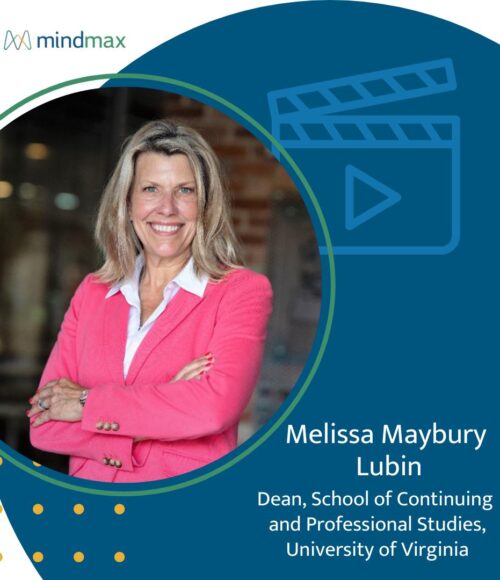Enrollment Management: 6 Guiding Principles for Higher Ed

Enrollment Management: 6 Guiding Principles for Higher Ed
Be Respectful. Provide relevant content. Be timely.
These three guiding principles make up the foundation of MindMax’s enrollment management strategy. Prospective students interested in a school’s programs use a similar decision-making process as when they buy anything on the internet, so it’s important to engage with them in ways that map to how they are accustomed to making purchasing decisions.
When enrollment management strategies combine respect, relevance, and timeliness, schools can better understand prospective students’ unique needs and effectively align with their decision-making cycles—critical elements that build trust and help grow enrollments.
Curious about what these principles look like in practice? Let’s take a closer look.
Best Practices for Respectful, Relevant, and Timely Engagement
Here are six best practices we use at MindMax to ensure that our enrollment management efforts are respectful, relevant, and timely:
1. DON’T bombard prospective students with phone calls
While our goal is to convert leads into enrollments or help facilitate that process, we never bombard prospective students with messaging in pursuit of these objectives.
Some prevailing wisdom dictates that you should always call an individual within 30 minutes of them becoming a lead, and that may be true in telemarketing, but that’s not what we’re doing here. We’ll reach out the same day, but not within 30 minutes because that can be off-putting to prospective students at the beginning of a lengthy decision-making process.
As we engage with students through the enrollment process, we avoid bombarding them with phone call after phone call, an approach that is respectful of the schools we work with and the leads we’re contacting on their behalf. Calling a prospective student five times in 10 days isn’t mindful of their time, which can create a negative perception of a school’s messaging and brand.
We apply our approach to emails, as well, ensuring that we align our communications with other emails the school is sending to a prospective student so that they aren’t overwhelmed.
2. DO listen to prospective students and adapt communications schedules accordingly
Listening is an essential and often overlooked part of enrollment management. When we connect with a prospective student, we hear and respect what they say—and we respond accordingly.
For example, if they tell us that now isn’t the right time for them to enroll in a program, we’ll take that feedback to heart and adjust our communications schedule so that we reach out to them again in 6-9 months instead of contacting them again 10 days later.
3. DON’T call prospective students without having a clear purpose
When we call a student, we make sure there’s a clear reason for our outreach. Whether it’s a new twist on the messaging, a reminder of an action they need to take, or a heads up about an approaching deadline, there’s always a relevant purpose to why we’re calling.
For example, if we have an early registration discount to share, we want to ensure prospective students can take advantage of it. This type of offer is both relevant and timely.
Providing relevant content also means considering the information we have learned about a prospective student. What are their goals? Do they want to start a program in the spring or the fall? We can use that information to drive the purpose of our communications, following up with gentle, relevant reminders to help students along their journey.
4. DO understand your role in the enrollment funnel
At MindMax, we make it a priority to understand the school we’re working with and our role in their enrollment funnel. The goal we are trying to achieve can differ from one school to the next.
For some schools, our team’s role is to engage with a prospective student and then pass them along to an in-house enrollment team. For other schools, we’re responsible for driving a prospective student through registering or submitting their application. Understanding this context ensures that our communications are respectful, relevant, and timely.
5. DO be professional, courteous, polite, and energetic
When calling a prospective student, we make sure that we’re professional, courteous, polite, and energetic so that they have a good experience with us and, in turn, think positively about the school.
Even though a particular program might not be the right fit for the person, we want them to have such a high regard for the school that they’ll consider it for future learning opportunities they might want to pursue.
6. DO make the process as easy as possible for prospective students
Remember that prospective students are buyers. An enrollment management team’s responsibility is to make it as easy as possible for that buyer to do business with the school.
If a prospective student is eager to connect, we connect with them immediately to show them that we value their time.
MindMax’s Enrollment Management Approach Gets Results
The results of our respectful, relevant, and timely enrollment management strategies speak for themselves and have helped many schools grow enrollments.
We recently had tremendous success leveraging our approach to help California State University, Dominguez Hills reenroll stopout students. Reaching out to these students, showing compassion for their situations, and offering them relevant and timely information about how to reenroll and complete their certificate or degree provided the gentle and respectful push many needed. With MindMax’s support, CSU Dominguez Hills grew 2022-2023 reenrollment by 245%.
Contact us today to learn more about how our enrollment management services can help your school grow enrollments.
Related Ideas
Melissa Maybury Lubin Wants Higher Ed to Be Affordable, Accessible, and Achievable

Marqus Dorame Advocates for Student-First Recruitment
